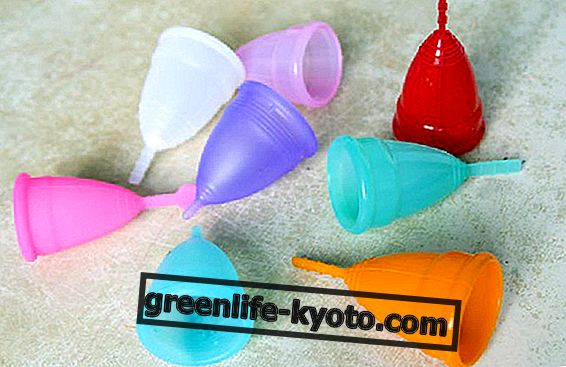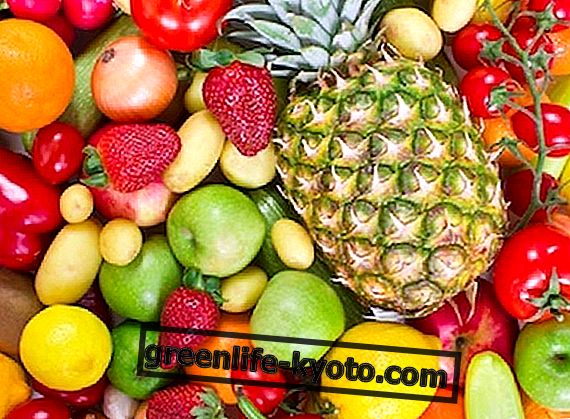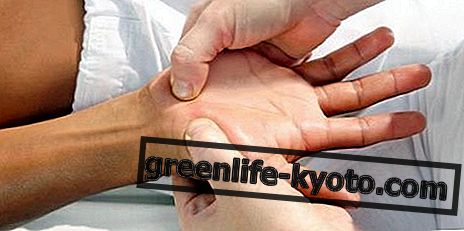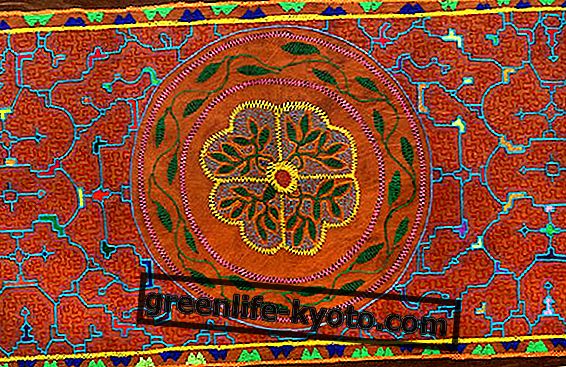Pineapple ( Ananas sativus ) is the fruit of the pineapple plant, belonging to the Bromeliad family . Thanks to the presence of bromelain it has a decongestant action, as well as being rich in mineral salts and vitamins. Let's find out better.

Pineapple properties
Pineapple is particularly rich in mineral salts (potassium, manganese) and vitamins (carotenoids, vitamin A, B complex and vitamin C).
The interesting thing is that vitamin C remains stable even after harvesting, because the fruit protects it from oxidation with its thick rind and its high acidity level. In fact, like citrus fruits, pineapple is also an alkalizing food : it therefore reduces the acid level of our pH, (often caused by an incorrect and unbalanced diet), restoring the basic acid balance and preventing inflammation, the first cause of diseases.
In phytotherapy the infructescence stem is used, whose most important component is bromelain, which gives the remedy a decongestant action, which stimulates the drainage of the inflammatory focus and the reabsorption of the hemorrhagic effusion.
For this property it is used in the treatment of inflammatory processes, especially in the case of edema, cellulite, reduced skin trophism, hematoma, acute post-operative and post-traumatic tumefactions, muscular, articular and venous insufficiency traumas.
In fact, cellulite appears as an inflammatory process on the lymphatic and microcirculatory system, which causes fluid transudation into the intracellular spaces; if left untreated, this process leads to the atrophy of the capillaries and the infiltration of fat in the intercellular spaces, with the formation of cellulite knots that can also cause pain. For these reasons, anans is one of the natural supplements for cellulite.
Pineapple stalk preparations are now widely used to improve blood and lymphatic circulation because they contain active ingredients with fibrinolytic action which, by acting at the level of blood vessels, reduce vasodilation and excessive permeability of the capillaries, attenuating localized inflammation or pain.
Bromelain also gives the pineapple an antiplatelet and modulating coagulation activity in venous insufficiency with a tendency to clot and thrombus formation.
The use of the pineapple stem is also effective in case of water retention and obesity due to its diuretic action, due to the presence of organic acids, capable of stimulating the elimination of excess fluids, accumulated in the subcutaneous tissue.
Finally, the predominantly proteolytic enzymes contained in the plant confer a digestive action directed above all to the synthesis of animal proteins (fish, meat), useful in situations of dyspepsia due to gastric and pancreatic enzymatic deficiency.
Natural remedies for cellulite and overweight

Method of use
INTERNAL USE
800-1000 mg of dry extract in the form of tablets or capsules in 2 administrations a day, away from meals.
Cotroindicazioni
Pineapple may have side effects and its preparations may be poorly tolerated by people with active peptic ulcers and are contraindicated to those being treated with anticoagulants, due to their moderate antiplatelet activity, because it could increase the risk of bleeding in people taking aspirin or blood thinners.
Description of the plant
Perennial plant with leathery leaves, long, lanceolate and almost always with thorns at the edges, united in large rosettes. From the middle of the rosette, the third year, the scape rises (flower peduncle) which brings the inflorescence to the extremity. The flowers are bracteate, purplish, compact on a short and robust stem.
Each flower has its own sepal; the sepals become fleshy and juicy and develop in the fruit, crowned by a rosette of leaves. What we mistakenly call fruit is an infructescence, which has a yellow fleshy flesh formed by the union of the bracts and of the axis and covered with a brown rind, formed by small plates fused together.
The real fruits are small berries whose outer wall is visible in the form of a polygonal shield. Fruits of this type are called syncopes.
The pineapple habitat
Originally from South America, it includes eight species and several ornamental varieties. Today it is cultivated in Europe in Hawaii, the Philippines, in south-eastern Asia, in Latin America, Florida and Cuba. It prefers soils with good internal drainage, and medium acidity and a tropical or sub-tropical climate.
Background
He was taken to the Caribbean islands by the Caribi Indians, who called him anana ; and in Guadalupe, in 1493 Cristoforo Colombo was able to see him for the first time. It was then brought to Europe and from there distributed in the Pacific islands by the Spanish explorers who named it " indie pinecone " and " royal pinecone " by the Europeans who could afford this exclusive fruit. The Spaniards later exported it to the Philippines and in the 16th century reached Hawaii and Guam.
The pineapple landed in England in 1660 and began to be cultivated in greenhouses around 1720.
Today pineapple is one of the most popular tropical fruits in the world. The juice of the pineapple stem, due to its enzymatic activity, was used as early as the 18th century as a remedy to facilitate difficult digestions.












